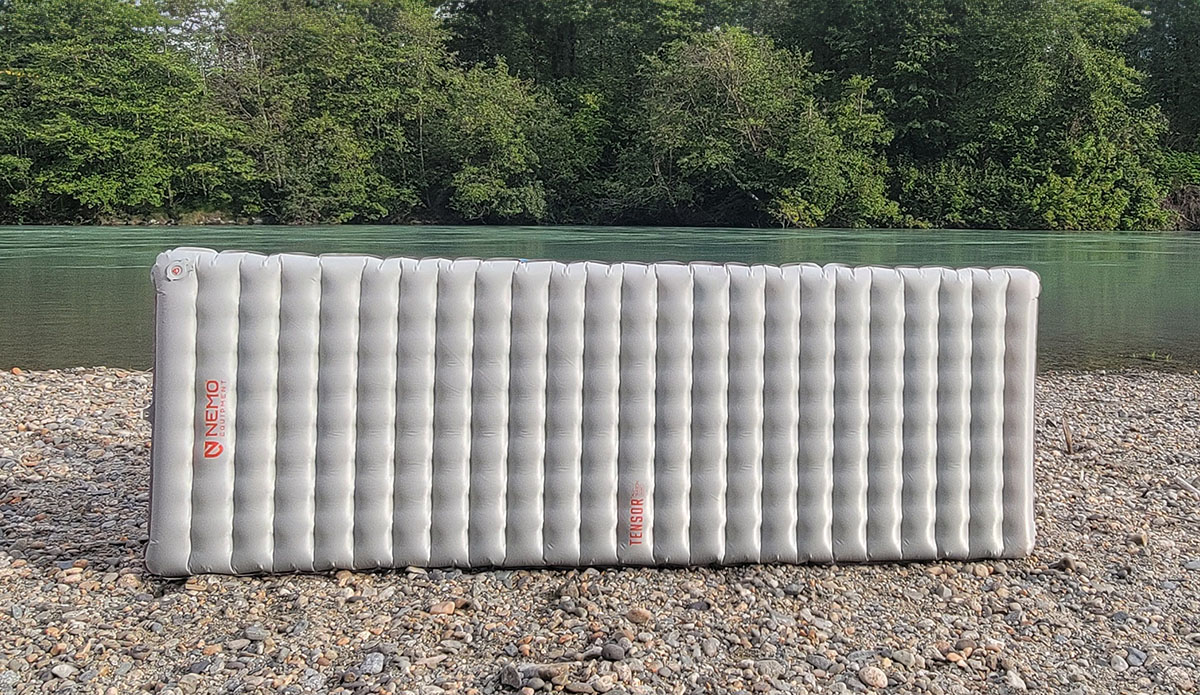
The NEMO Tensor All-Season is about as good of an all-around sleeping pad as you can buy. Photo: Steve Andrews//The Inertia
A good sleeping pad is a game changer in the backcountry. When you’re backpacking, every ounce counts, so the lighter the better, but not at the cost of comfort. The NEMO Tensor All-Season Sleeping Pad ($200) is equal parts lightweight and comfortable. In our guide to the Best Backpacking Sleeping Pads, the Tensor was our runner-up best pick. With an R-value of 5.4, it also does its due diligence to help you stay warm and cozy, even on the chilliest of nights.
Folks who value a good night’s sleep but don’t want a ton of extra weight or bulk in their pack will find the Tensor satisfies a lot of those must-haves. We’ve been testing the Tensor for the past few months both in the Coast Mountains of British Columbia, and high-elevation sites on Oahu, and it’s fast becoming our go-to sleeping pad when we want to pack light.
| Pros | Cons |
| Lightweight | Valve and pump-sack lack user-friendliness |
| Great insulation | Prone to punctures |
| Relatively quiet when tossing and turning | Stuff sack isn’t very durable |
| Packs down small for insulation |
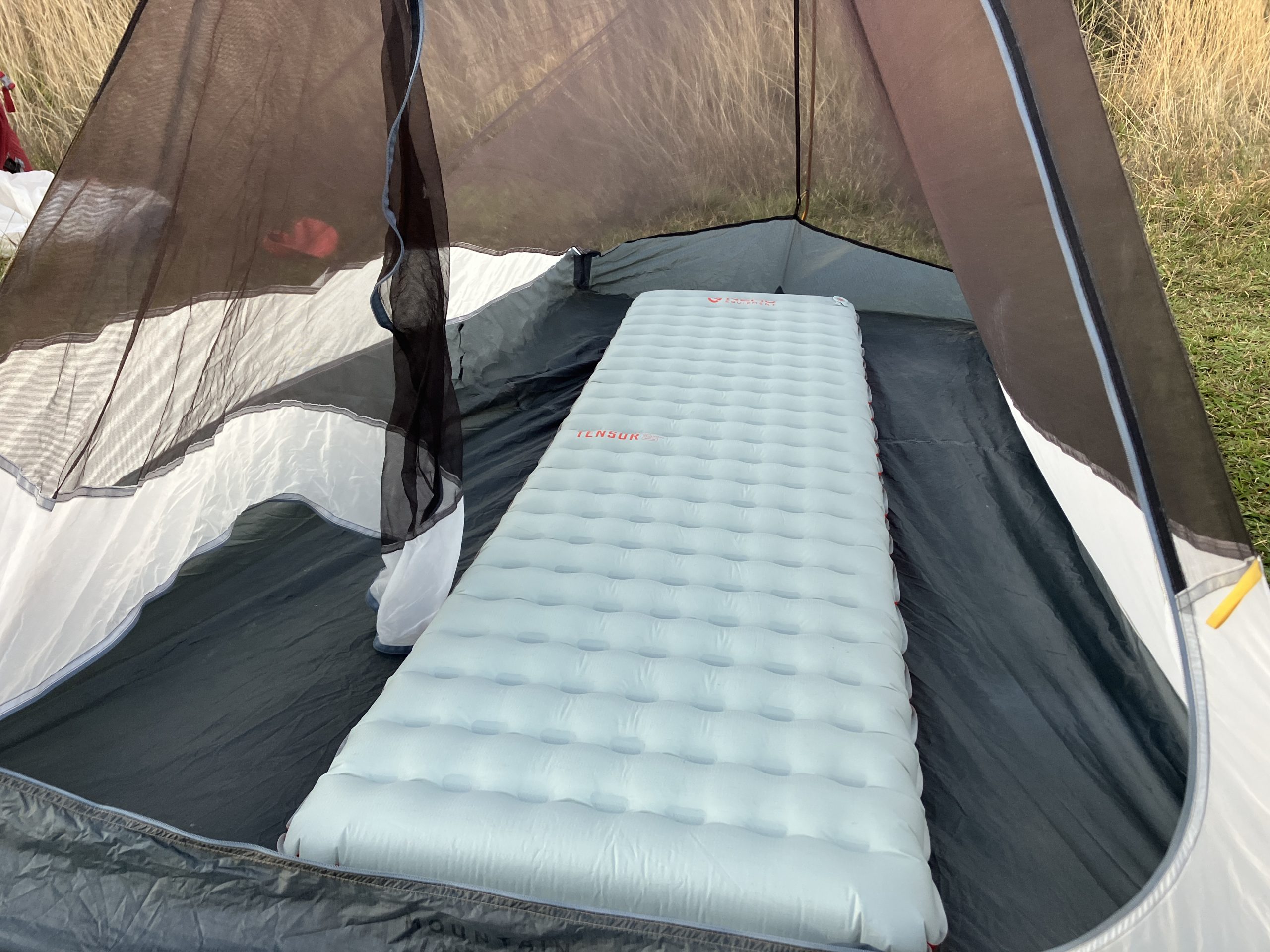
Packing down to 10 x 4 inches and weighing in at just 14.8 ounces, the NEMO Tensor is incredibly light and packable. Photo: Rebecca Parsons//The Inertia
NEMO Tensor All-Season: First Impressions
 R-Value: 5.4
R-Value: 5.4
Pad Thickness: 3.5 inches
Weight: 14.8 oz
Packed Size: 10 x 4 inches
Insulation: Yes
When I first unboxed the Tensor, I was impressed with how lightweight and packable it was. It comes in a stuff sack with a Velcro band around the pad itself. In the past, I’ve had trouble getting my sleeping pads back into their sacks, so I thought the band was a nice addition just in case I couldn’t get it to fit.
The Tensor comes with a pump sack that is one of, if not the best, pump sacks I’ve tested. This is because the top area you blow into has a rubber gasket to help form a seal, resulting in less wasted air spilling out. The top section is also smaller than the rest, so you don’t have to crumple the bag up as much as others. The tradeoff with this is that it’s not as easy to inflate by pointing the pump sack into the wind. But we are only talking about a few seconds difference.
After getting the pad inflated, I was impressed with how thick and cushy it was and was eager to see how it fared in the backcountry. It’s cozy and easy to roll around on and provided many a good night’s sleep over the past few months. That seems to be the deciding factor on whether a sleeping pad is worth it or not: how you wake up in the morning. And for an air mattress, the checkerboard pattern provided enough comfort and weight distribution for me to give it the thumbs up.
Check Price on REI Check Price on Backcountry
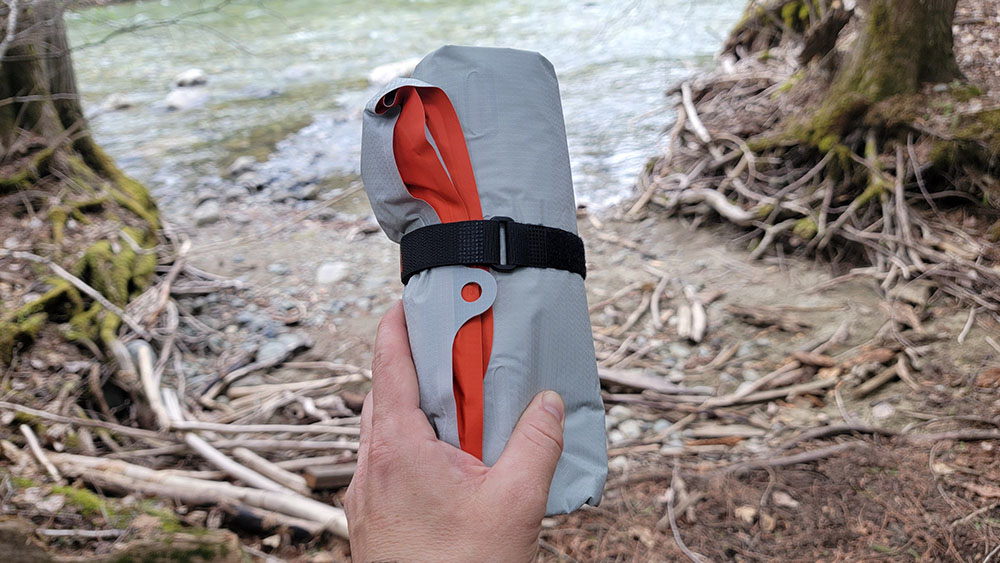
The NEMO Tensor All-Seasons packs up impressively small. Photo: Steve Andrews//The Inertia
Notable Features of the NEMO Tensor
Measuring 10 x 4 inches when packed and weighing just 14.8 ounces, the Tensor All-Season sleeping pad is lightweight and compact. The Tensor comes in four different shapes: Regular Mummy, Regular, Regular Wide, and Long Wide. Size and weight vary slightly depending on which shape pad you use. I tested the Regular shape, so all sizes and weights are based on that pad.
If you’re into technical specifics, the Tensor sports a baffle design that uses low-stretch fabric tussles to create a stable sleeping platform. Inside each of the baffles are two suspended layers of Thermal Mirror film, which reflect body heat and work to contribute to the overall warmth of the pad. In short, the Tensor has ridges throughout that cut down on weight while still providing lots of cushioning. The Tensor sits 3.5 inches off the ground and has an R-value of 5.4, so it’s a reliably warm pad for year-round camping (it just might be a tad chilly in the winter).
A huge design win of the Tensor is that it’s quiet while you’re sleeping. While many pads crinkle when you roll around, the Tensor is much more muted.
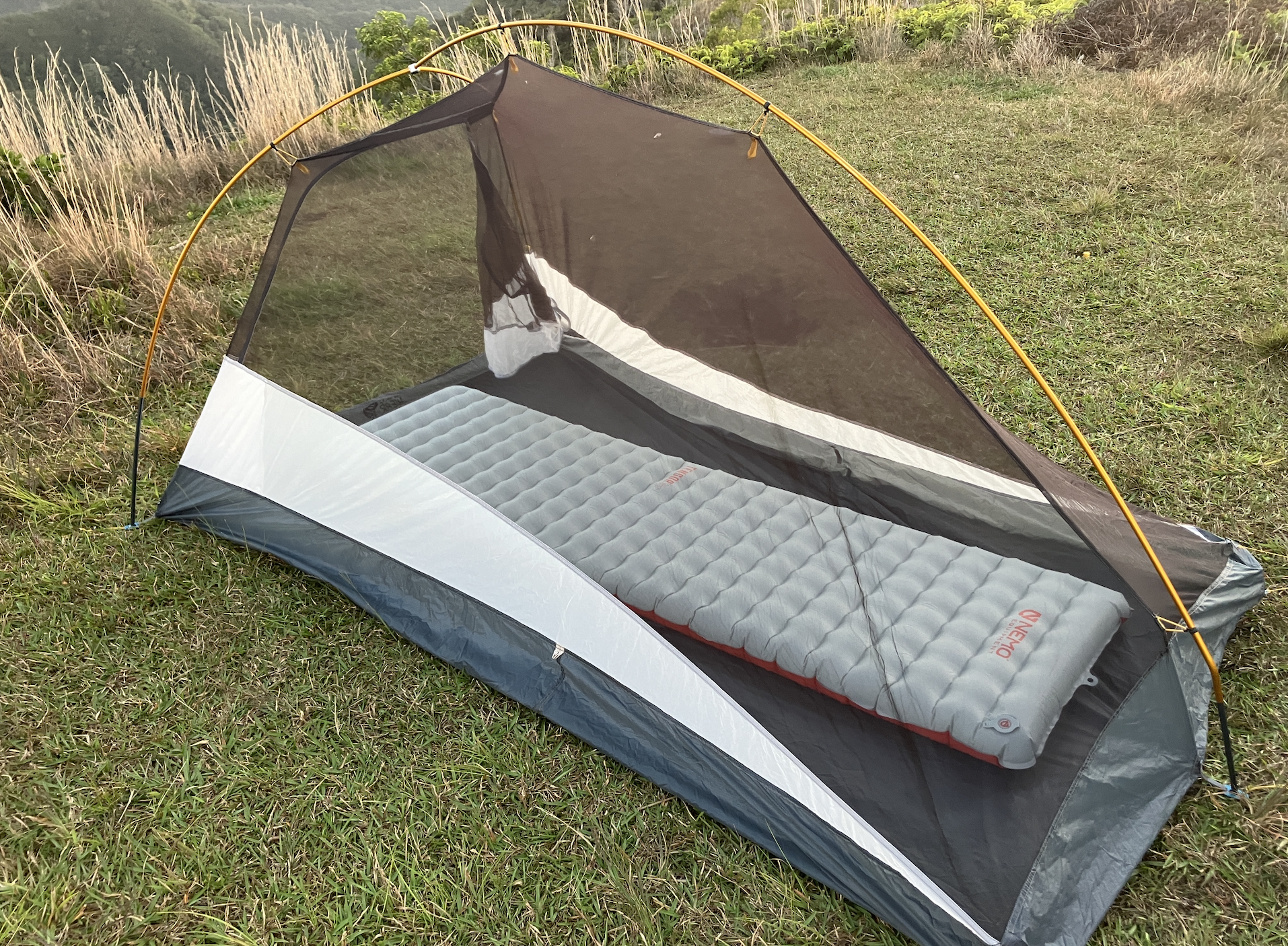
The Tensor packs down small but is spacious when inflated. Photo: Rebecca Parsons//The Inertia
Insulation: Having an R-value of 5.4, this is excellent insulation for most times you’ll be outside. R-values of 5.4 are generally considered to insulate down to 0º F, which makes the “All-Season” part of the name not just for show. I didn’t take it out anywhere that cold, but still had a comfortable sleep in the spring thaw in Canada where temperatures came close to freezing overnight.
Rectangular shape: Many sleeping pads trying to cut down on the weight statistic have a mummy shape, meaning the pad is much narrower at the feet than it is at the shoulders. While the Tensor does offer a mummy shape (bringing the weight down to 14 oz), we were happy enough with incrementally extra ounces that gave us some more space while sleeping.
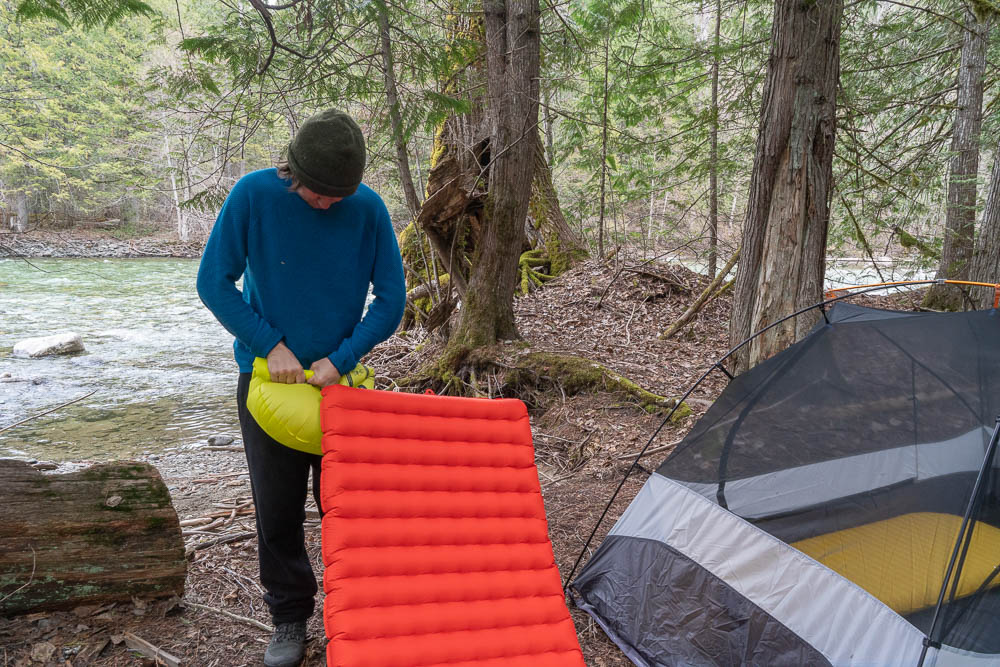
NEMO’s Vortex pump sack makes for easy inflation – just be careful not to pop the valve off. Photo: Lindsay Gough//The Inertia
Drawbacks of the NEMO Tensor
Being a lightweight sleeping pad, the Tensor hasn’t held up in the durability department as well as competitors. NEMO did put a bit of thought into the design to offer 40D nylon on the bottom end to proactively try to prevent punctures and tears. That said, I had a few punctures along the way as a thru-hiker, so you still need to be mindful of the ground underneath. You can get away with it a bit more if you have a thicker tent floor, but mistakes do happen, as with any air-filled sleeping pad. The key is being aware of the ground underneath and realizing that it can happen any time and anywhere.
If your sleeping bag has a sleeve for a sleeping pad I highly recommend inserting the pad so you avoid slipping and sliding through the night.
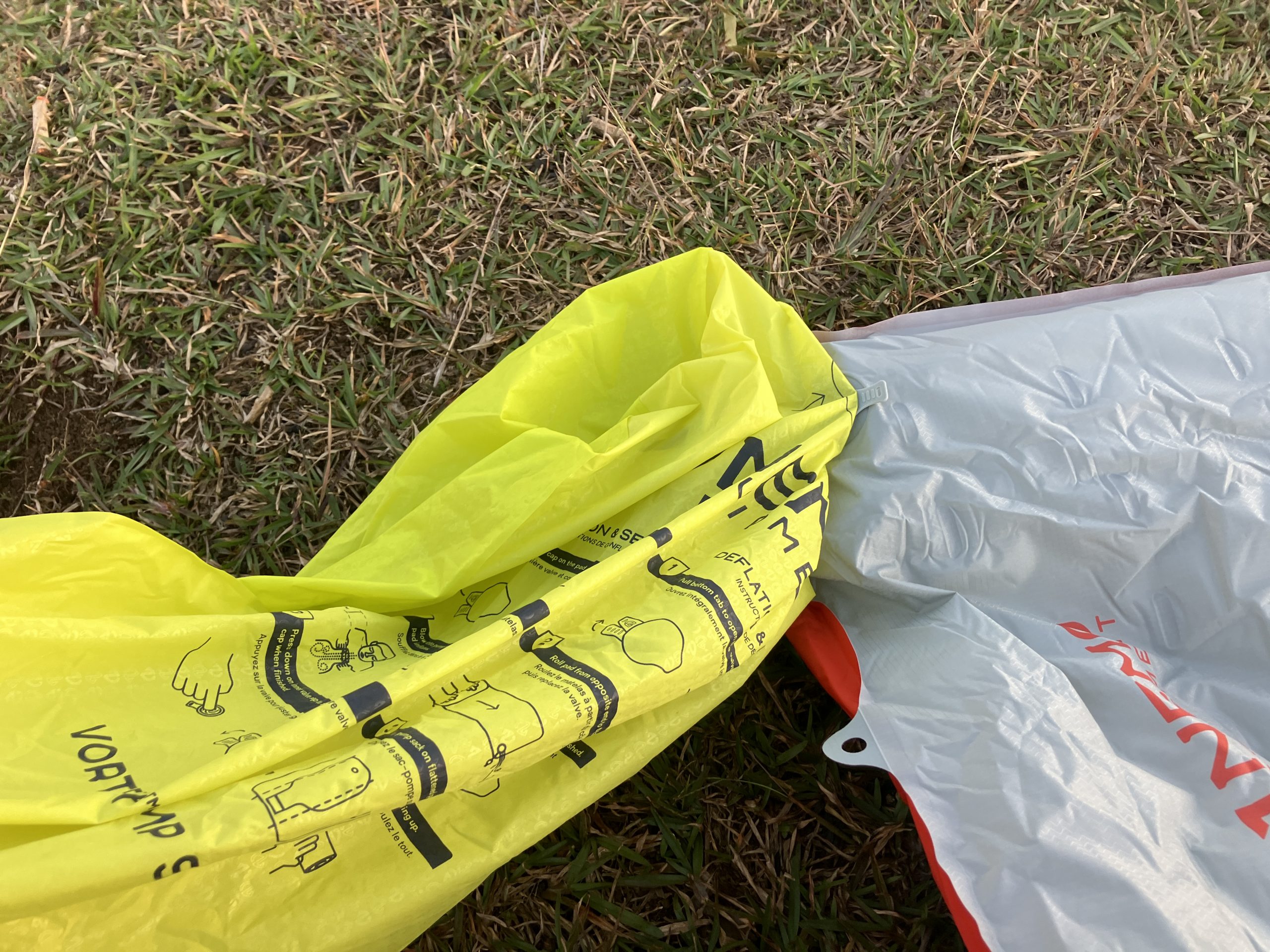
The pump sack is useful but takes some time to fill the Tensor. Photo: Rebecca Parsons//The Inertia
Getting the Tensor inflated with the pump sack proved to be challenging. The main drawback design-wise that I found was in the inflation valve, which doubles as the deflation. A few times while inflating in limited space, the valve popped open and air rushed out, causing a bit of frustration to have to pump up again. Thankfully this pad doesn’t take that long to pump up, but it’s something to be mindful of if you’re always inflating inside your tent, for example.
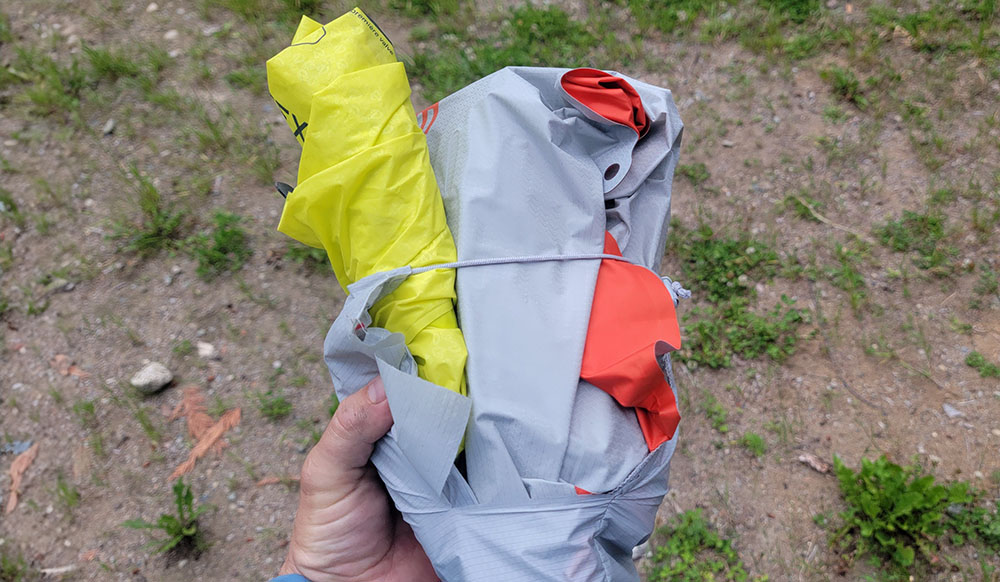
The stuff sack ripped after only a few uses. Thankfully the drawstring helped keep things tidy until I could get a replacement. Photo: Steve Andrews//The Inertia
And while it doesn’t have much to do with the performance of the pad, the stuff sack could use some extra durability. The seams ripped without much force, which is a bit of a pain for keeping things tidy in the pack. It was a bummer to have this happen while out in the wild and not having a replacement stuff sack handy.

The NEMO Equipment Tensor All-Season Sleeping Pad. Photo: Rebecca Parsons//The Inertia
Final Thoughts
If you’re in the market for a lightweight backpacking sleeping pad, the NEMO Tensor All-Season is a great choice. The combination of lightweight packability and 5.4 R-Value made Tensor one of our favorite all-around options of the year. Packing down to 10 x 4 inches and weighing in at just 14.8 ounces, it’s incredibly light and packable, yet boasts the R-value for extended three-season backpacking.
It provides a comfortable sleep and packs up small enough to be hardly noticeable in your backpacking backpack. It seems to have hit a sweet spot in terms of weight, durability, and comfort, whereas other ultralight sleeping pads didn’t provide as good of a sleep.
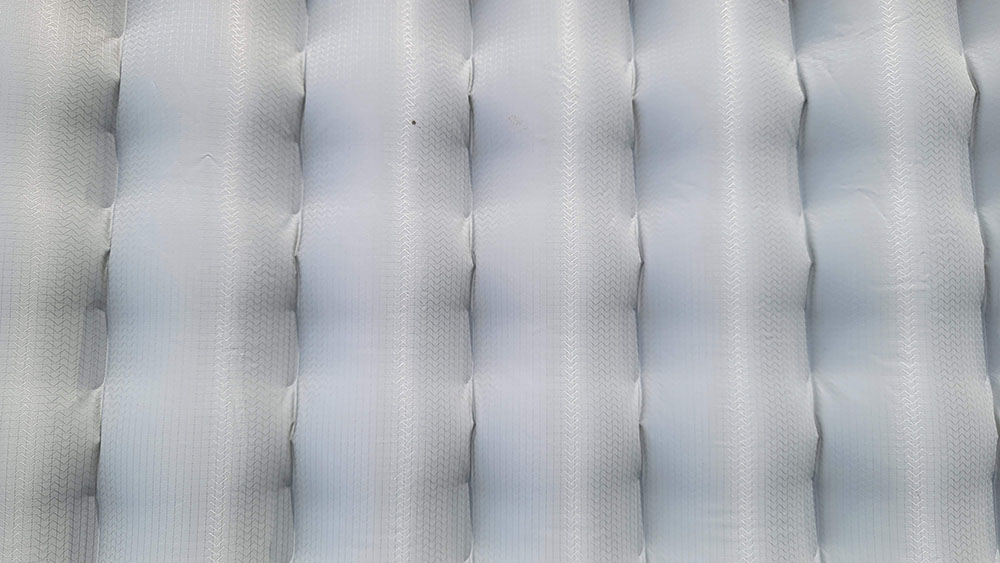
A closeup view shows the level of detail NEMO takes to achieve a good night’s rest. Photo: Steve Andrews//The Inertia
NEMO also uses bluesign-approved materials, which means less impact on our environment. Aside from sleeping well at night thanks to the comfort, you can also sleep well knowing that your purchase is more conscientious of the world around us.
The NEMO Tensor is also available in an Ultralight version with a 2.8 R-value, as well as an Extreme version with an 8.5 R-value.
CHECK PRICE ON REI CHECK PRICE ON BackcountryEditor’s Note: Don’t miss the rest of our guide to the Best Backpacking Sleeping Pads. For more gear reviews and features on The Inertia, click here.




